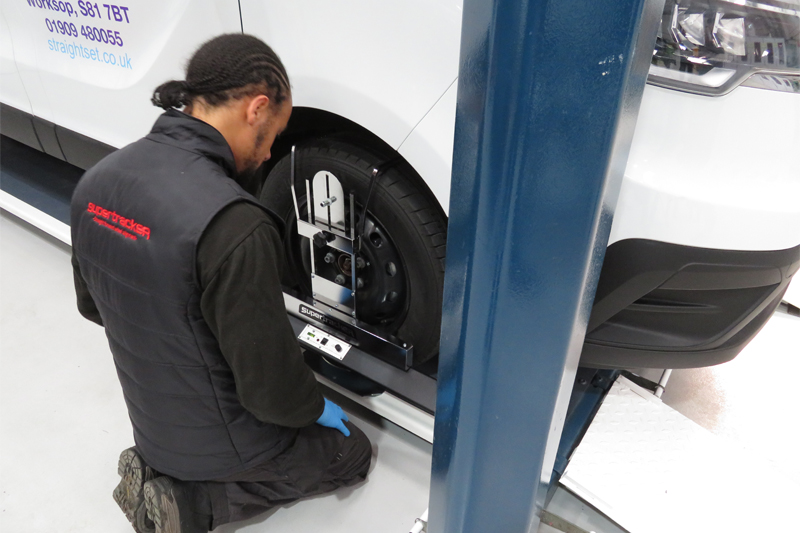
Just as a vehicle’s wheel alignment can be affected by usage, so can the wheel alignment machine itself. Straightset explains how scheduled calibration by approved companies is important to minimise risk.
With many independent garages offering wheel alignment services to their customers, it’s becoming a key service offering for vehicle workshops. There are many clear advantages to the customer as to why accurate wheel alignment is important: It improves handling, prolongs the life of your tyres, increases wear on suspension components and helps reduce misalignment issues causing poor fuel economy.
It’s all the more important for the garages themselves to ensure that their choice of wheel alignment equipment is up to the job of accurately measuring the alignment of the vehicles they are servicing.
There are a range of wheel alignment machines available on the market, from a range of manufacturers, utilising a range of measuring technologies, including laser, Bluetooth, 3D. All have their own advantages in terms of accuracy and ease of use for the person operating them.
Just as a vehicle’s alignment can be affected by usage, so can the wheel alignment machine itself. Measuring heads can be accidently dropped, misused, fitted with replacement parts, all of which may affect their accuracy. One of the most important aspects of maintaining your machine of choice is ensuring it is calibrated. That’s why it’s recommended by the wheel alignment manufacturers to calibrate machines regularly. This will maintain the integrity of your wheel alignment service and ensure your mechanics are adjusting vehicles within the correct parameters.
Supertracker recommends that its laser and CCD wheel aligners are calibrated every 6-12 months or sooner if any of the above has occurred. The team of Supertracker engineers offer a national on-site service, with mobile test rigs calibrated to traceable standards, for accurate calibrations backed with a certificate for your records.









